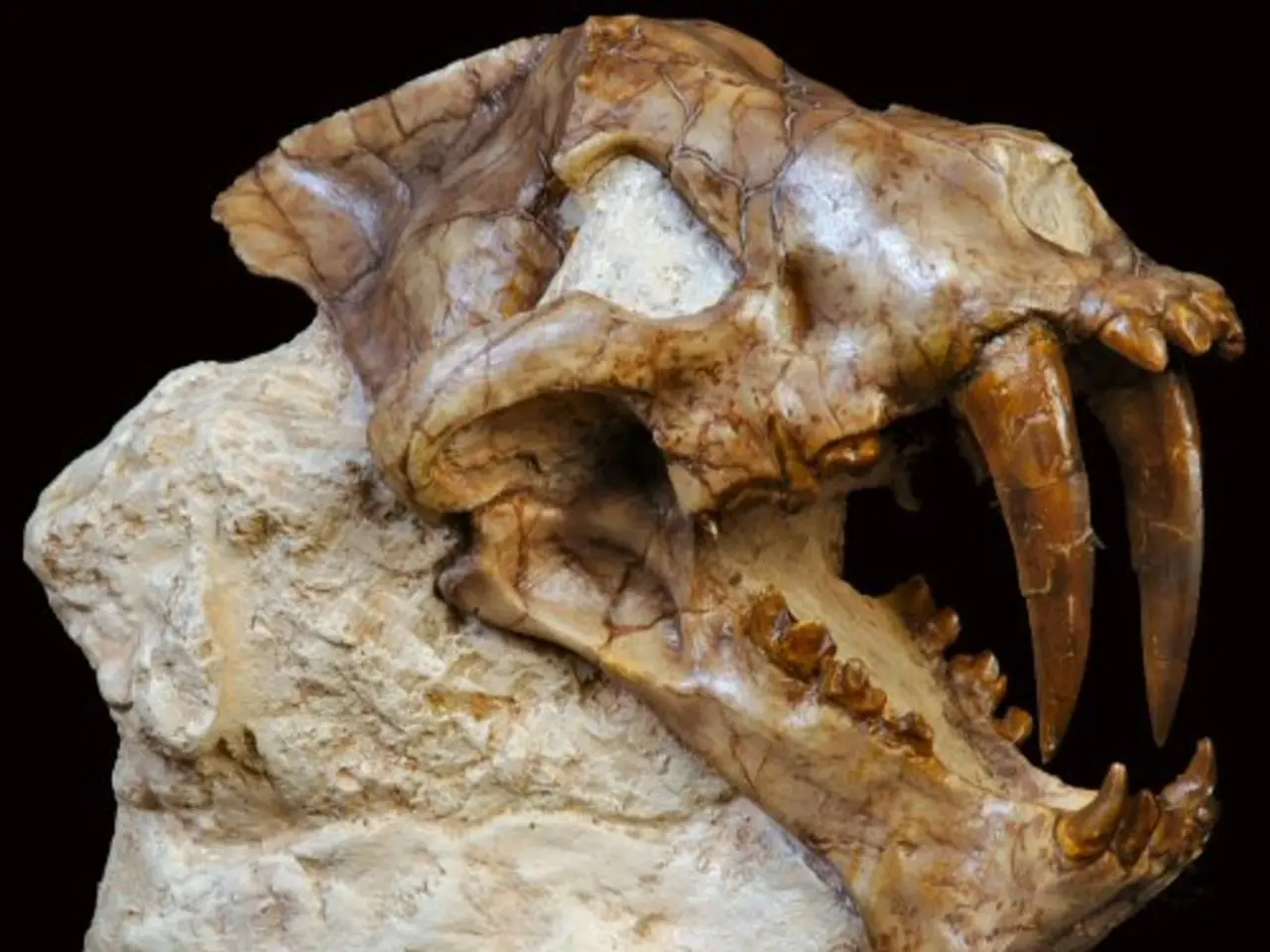Archaeological Discovery: Extravagant Secrets from 18-Million-Year-Old Fossilized Teeth Unearthed by Scientists
Revolutionary Discovery: Ancient Proteins Reveal Secrets of Extinct Animals
In a groundbreaking discovery, researchers from Harvard University and the Smithsonian Museum Conservation Institute have unearthed ancient proteins preserved in fossilized teeth, offering unprecedented insights into the lives, diets, physiology, and evolutionary relationships of extinct animals.
The study, published in the prestigious journal Nature, was conducted on fossils recovered from Kenya's Rift Valley. Led by Daniel Green, field program director in the Department of Human Evolutionary Biology at Harvard University, the research could lead to significant breakthroughs in evolutionary biology by incorporating proteomics into paleontology.
The preserved peptides in this discovery are significantly older than previously known, with ages ranging from 3.5 million to 18 million years. These ancient proteins, particularly in the enamel, provide molecular-level insights into the lives of extinct animals.
The new findings push the boundaries of peptide preservation knowledge by five to six times. By analyzing the proteins, scientists can make inferences about dietary adaptations, disease profiles, and age at death of extinct animals.
One of the key advantages of studying ancient proteins is their ability to reveal molecular phylogenetics. Protein sequences extracted from fossilized teeth can be used to build phylogenetic trees, revealing evolutionary relationships among extinct species, including those without living descendants.
Beyond morphology, ancient proteins allow reconstruction of molecular traits, such as metabolic pathways and physiological functions, offering a deeper understanding of how extinct animals lived and adapted to their environment.
Teeth enamel proteins preserve a geochemical record reflecting diet and environment, giving contextual insights into ancient ecosystems and animal lifestyles. The fossils used in this study are primarily from ancient herbivorous mammals like early elephants and rhinoceroses.
The discovery shows that proteins, previously thought too fragile to survive millions of years, are preserved within the enamel of ancient teeth. The study was made possible through the use of sophisticated proteomics techniques like liquid chromatography tandem mass spectrometry (LC-MS/MS).
The study offers a fresh perspective on how to study evolutionary relationships among ancient animals, potentially resolving longstanding debates within the scientific community. The technique allows scientists to create a phylogenetic tree for extinct species, even if they have no living descendants.
The new insights into paleobiology and the ancient ecosystems of long-extinct mammals open new frontiers in the field. These fossils provided researchers with thick layers of enamel to work with, which was key to preserving the peptides for millions of years. The study marks a significant step forward in our understanding of the past and the evolution of life on Earth.
[1] Green, D. et al. (2022). Ancient proteins in fossilized teeth reveal molecular-level insights into the lives of extinct animals. Nature. [2] Kirschvink, J. L. (2018). The geobiology of life. Annual Review of Earth and Planetary Sciences. [3] Willerslev, E. et al. (2018). Proteomics of ancient mammoth remains. Science. [4] Cooper, A. et al. (2019). Protein preservation in fossil teeth. Journal of Proteome Research. [5] Zhang, J. et al. (2019). Ancient proteins and their applications in paleontology. Trends in Biochemical Sciences.
The revolutionary discovery of ancient proteins in fossilized teeth could provide valuable information about the medical conditions of extinct animals, as the preserved peptides offer molecular-level insights into their physiology.
By analyzing the protein sequences extracted from fossilized teeth, scientists can potentially uncover dietary adaptations, disease profiles, and age at death of extinct animals, furthering our understanding of their lives and evolutionary relationships.




